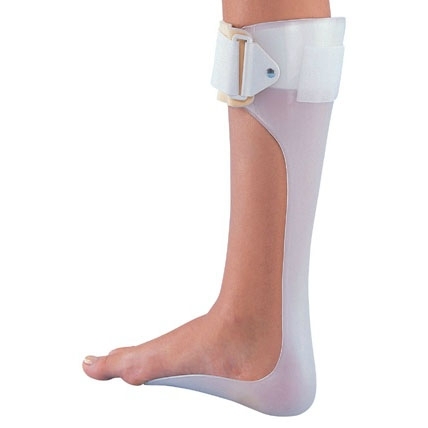Ankle Foot Orthosis (Greek: Ορθός, ortho, “to straighten” or “align”) is a specialtywithin the medical field concerned with the design, manufacture and application of orthoses. An orthosis (plural: orthoses) is “an externally applied device used to modify the structural and functional characteristics of the neuromuscular and skeletal system“.[1] An orthotist is the primary medical clinician responsible for the prescription, manufacture and management of orthoses. An orthosis may be used to:
- Control, guide, limit and/or immobilize an extremity, joint or body segment for a particular reason
- Restrict movement in a given direction
- Assist movement generally
- Reduce weight bearing forces for a particular purpose
- Aid rehabilitation from fractures after the removal of a cast
- Otherwise correct the shape and/or function of the body, to provide easier movement capability or reduce pain
Orthotics combines knowledge of anatomy and physiology, pathophysiology, biomechanics and engineering. Patients who benefit from an orthosis may have a condition such as spina bifida or cerebral palsy, or have experienced a spinal cord injury or stroke. Equally, orthoses are sometimes used prophylactically or to optimise performance in sport.
Orthoses were traditionally made by following a tracing of the extremity with measurements to assist in creating a well-fitted device. Subsequently, the advent of plastics as a material of choice for construction necessitated the idea of creating a plaster of Paris mould of the body part in question. This method is still extensively used throughout the industry. Currently, CAD/CAM, CNC machines and 3D printing[3] are involved in orthotic manufacture.
Orthoses are made from various types of materials including thermoplastics, carbon fibre, metals, elastic, EVA, fabric or a combination of similar materials. Some designs may be purchased at a local retailer; others are more specific and require a prescription from a physician, who will fit the orthosis according to the patient‘s requirements. Over-the-counter braces are basic and available in multiple sizes. They are generally slid on or strapped on with Velcro, and are held tightly in place. One of the purposes of these braces is injury protection.


.jpg)
.jpg)





Reviews
There are no reviews yet.